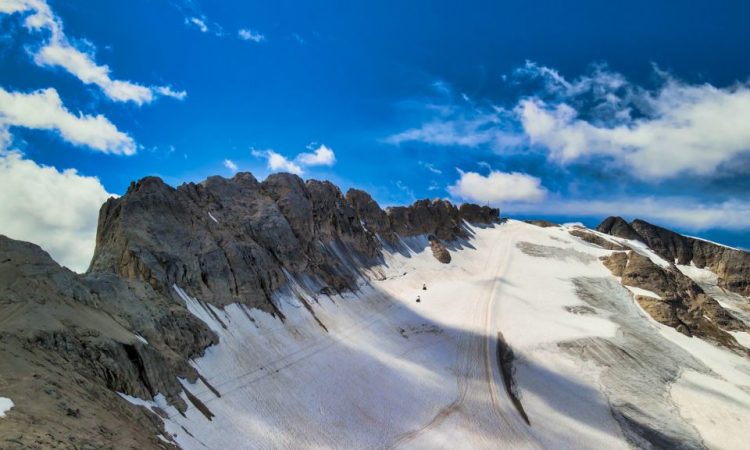
It loses as much as 7 centimeters a day and, according to forecasts, it could disappear completely by 2040.
The Marmolada glacier, the largest in the Dolomites, is experiencing a rapid: it is losing as much as 7 centimeters a day and, according to forecasts, it could disappear completely by 2040. This alarm was launched by the campaign report ‘Glacier Caravan 2024’ of Legambiente, dedicated to the monitoring of Alpine glaciers. The sixth and final stage of the tour ended right on the Marmolada, symbol of the climate crisis that is overwhelming the white giants of the Alps.
Advertisement
The Marmolada: a glacier in an irreversible coma
The picture painted by Legambiente’s budget, drawn up in collaboration with Cipra Italia and the Italian Glaciological Committee, is alarming. The once majestic Marmolada glacier is described as . If the situation does not change, by 2040 there will be no trace of what once was the great giant of the Dolomites. Since 1888, in fact, the Marmolada has retreated by 1200 metres, losing over 70 hectares of surface area in the last five years alone, an area equivalent to 98 football fields.
Climate crisis and pollution: enemies of glaciers
In addition to the climate crisis, other factors contribute to the decline of glaciers, including waste left at high altitude, and the unresolved issue of post-closure management of ski resorts, such as that of Pian dei Fiacconi. Legambiente and the Italian Glaciological Committee underline how these elements are negatively influencing the health of the Marmolada and other Alpine glaciers.
The decline of the largest glaciers in the Alps
Not only the Marmolada, but also the other two largest glaciers in the Alps, the Adamello and the Forni, are in great difficulty. Long-term measurements on the Adamello glacier show that the thickness of the ice is such that today it is possible to walk on ice formed by snowfall in the 1980s. The Forni glacier, however, is losing up to 10 centimetres of thickness per day in some critical points.
The Marmolada: a desert of rock instead of ice
The data collected tells of a Marmolada which has suffered an area loss of 80% since 1888 and a volumetric reduction of 94%. Today the maximum thickness of the glacier is just 34 meters, a tangible sign of the acceleration. What was once a massive glacier is turning into a desert of white rock, smoothed by the retreat of the ice, while new ecosystems are starting to come to life in these areas abandoned by the ice.
Legambiente’s appeal: concrete actions to save glaciers
Faced with this scenario, Legambiente has launched an urgent appeal. Through the online petition ‘A signature for glaciers’the association asks the government for concrete actions for glacier governance that can save these ecosystems vital to our planet.
The glacier crisis is no longer a distant threat, but a reality that is transforming the Alpine landscape and our ecosystem. Acting now is the only way to hope to save what remains of the white giants of the Alps.

